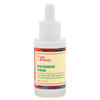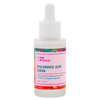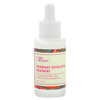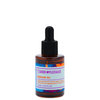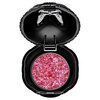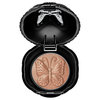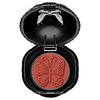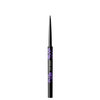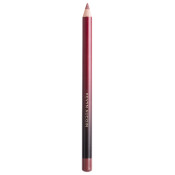
You know when you’re out in public, feeling put-together because you’re fully done up and rocking a seriously bold lip? That bright color is really helping you feel good—you know it looks good. Then, after awhile, you forget you’re wearing lipstick, and you go to the bathroom. After glancing in the mirror, and...your lipstick looks fuzzy. And you realize that it’s happened: your color bled! Tiny little lines of color, subtly spreading from the top of your lip line to the skin under your nose. Suddenly, you look all smeary, like you don’t know how to apply makeup. Why can’t lipstick just stay put?
To get some answers, we called in two renowned makeup artists, Sarah Lucero and Fredrik Stambro, who explained what causes—and how to fight—the lipstick lovers’ arch nemesis: bleeding.
It’s not you, it’s your lipstick
Both Lucero and Stambro agree: generally, it’s not you, darlin’, it’s your lipstick. Lipstick is, as Stambro puts it, “a creamy product on top of a moving surface.” Meaning, as we laugh, kiss, and eat, the emollient substance slips around a bit. Lucero echoes that, saying that color won’t necessarily stay firmly on the lips, especially if you’re using something with “a really creamy formulation, or if you’re wearing a balm underneath that’s too greasy.”
According to Stambro, the more shine or gloss a lip product has, the more likely it’ll bleed. And Lucero concurred, adding to the list any lippie that looks “frosted” or “containing a shimmery pigment.” She also notes that the feel of the product itself might tell you even more about it’s lasting power. “If it feels like a butter or balm and slippery to the touch, it does tend to run more,” she says.
...except when it IS you
Another factor, though, is age. “As we get older, pigment can seep into the fine lines around the lips,” explains Lucero. “Most of us tend to buy the same products we always have, but we might need to reassess that as the seasons change and the years go by.” Translation: a creamy lipstick that stayed put when you were 20 might not always work forever and ever.
Handy helper #1: the right lip liner
Lip liner can help, especially if it’s a good one. Lucero actually uses liner after applying lipstick, to shape the lips. “This helps to lock in the color, and seal it inside the lip line,” she explains. And if you don’t want to buy a matching liner every time you get a new lipstick, go with a pencil that matches your natural lip color. Lucero recommends Kevyn Aucoin The Flesh Tone Lip Pencil in Medium as one that works for “just about everyone.”

A clear or translucent lip liner, like Too Faced Borderline Lip Pencil, is another good solution. Stambo says using it under your regular liner is a good move for “extra bleeding-prevention.” Sarah says you can think about these almost like a “wax seal that fences in the color around your lips.” Sounds good to us! “If it’s the right texture, not too balmy,” she says, “it could definitely help those who have issues with bleeding, especially with brighter colors.”
Handy helper #2: the right brush
When I asked what about application might help lipstick last longer, our experts were of one mind, citing brushes as the way to go. Lucero was really emphatic, and says that she tends to use concealer brushes for the job. “A brush is sooo helpful—it helps you spread the pigment evenly, especially if it’s a brighter color. Start by applying your lipstick lightly, as if it were a stain with your brush. Blot, and then build up to the color you want,” she explains. With liquid lipsticks, the process is a little different, and less is definitely more. “I never use the wand that comes with them, because they put on too much product. I’ll just take a lip brush, start on the center of the lower lip, and sort of paint it on,” she says. For liquids and creams, we like Wayne Goss Brush 07 and Billy B Paint Brush Seven.

2 lasting-power secrets
Stambo’s secret formula? A bit of foundation as a base, liner plus lipstick, and a dusting of powder. “I prep lips with a moisturizer (possibly a scrub, too, if they’re extra dry). Then I apply a touch of foundation over the lip line—not the whole mouth,” he explains. He follows with liner in the exact same color as the lipstick, and then applies the color using a brush. To perfect the line, he goes over it again with the liner, “to make sure the lipstick and pencil blend really well.” Finally, he blots gently with a tissue, and goes over it all with a light touch of powder using a big powder brush. “Or,” he explains, “you could use an eye shadow in the same color as a lipstick.”
Lucero has a few tricks up her sleeve, too. “Sometimes, I use a cotton swab to go in and really clean up the lip line and get rid of excess product. It has to be a fuzz-free swab, though; I highly recommend a brand called Muji. I go through so many cartons of these during Fashion Week, it’s unbelievable,” she says.
Featured Products
You Might Also Like
-

Wellness
Five Memory-Boosting Foods
- 844
-
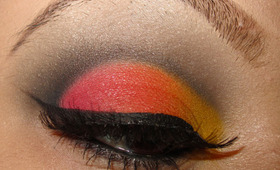
Eyes
How To: Cut a Crease
- 433
-

Tips & Tricks
How to Talk to Your Audience
- 362
-
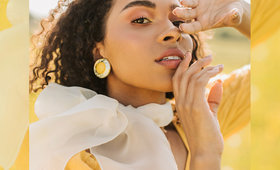
Beautylish Recommends
Sweat-Proof Matte Makeup To Withstand the Summer Heat
- 1409
-
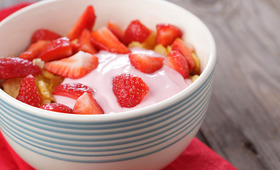
Wellness
Why We Love Yogurt
- 648
-
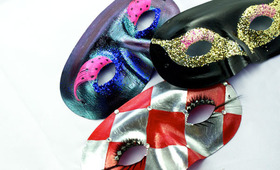
DIY Projects
Masquerade Mask Tutorial
- 317
-
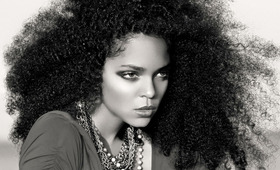
Expert Advice
4 Surprising Curly Hair Myths
- 346
-

Expert Advice
Beauty Etiquette 101
- 252



